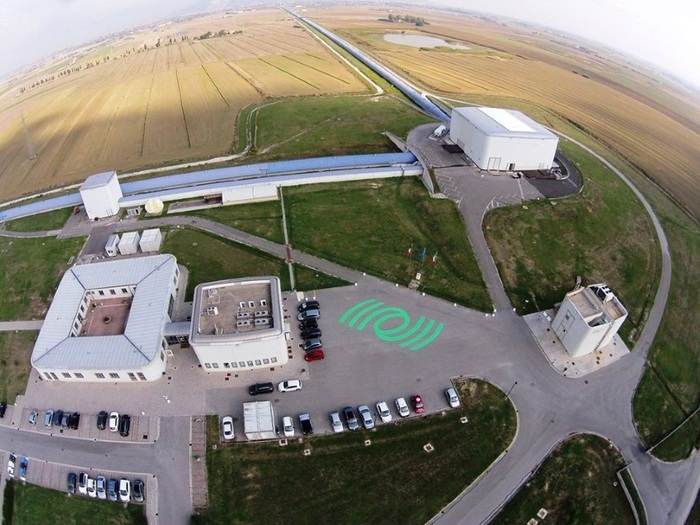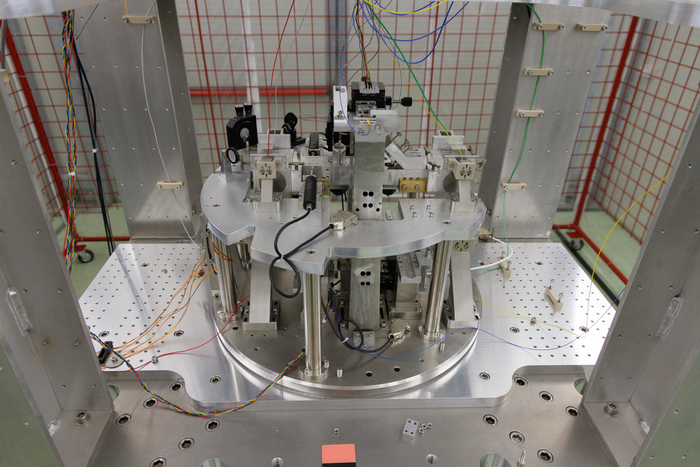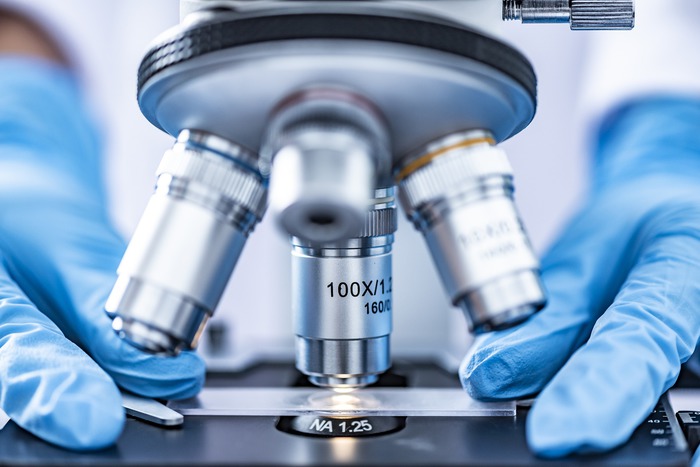Pablo Morales Álvarez, computer scientist awarded by the SCIE and BBVA for his algorithms to identify the effects of gravitational waves.Miguel Ángel Medina / BBVA Foundation
A simplistic and common criticism of investigations into the origin and behavior of the universe is their lack of practical application in everyday life.
If the answer that these studies allow us to know our world and the emergence of life is not enough, two of the ten prizes from the Spanish Scientific Informatics Society (SCIE) - BBVA Foundation (endowed with 5,000 euros) this year provide a a resounding answer: computer scientists Saúl Alonso Monsalve, a 28-year-old from Madrid, and Pablo Morales Álvarez, a 30-year-old from Granada, have been awarded for their work with artificial intelligence to identify neutrinos and measure the effects of gravitational waves, two universal singularities that have affected them. led to developing tools that help diagnose cancer in milliseconds.
Neutrinos are the second most abundant particle in the universe after photons (particles of light).
Billions of the former pass through our body —and any matter— every second, since they lack an electrical charge and only interact with the weak nuclear force (one of the forces known along with gravity, electromagnetic, and strong nuclear).
They also have mass, although it is not known how much or how it originates, and they travel in straight lines, so they are unique messengers of the origin of the universe.
But these singularities make them very difficult to detect, so much so that they are called "ghost particles."
The types of neutrinos (electron, muon and tau) are known in physics as “flavors” and they oscillate.
“This means”, explains Alonso Monsalve, “that when measuring the flavor of a neutrino some time after it was generated, it is possible that it has changed.
Matter particles (dominant, although it is not known why) interact with antimatter, which is called CP (charge parity) violation.
Thus, neutrinos and antineutrinos oscillate differently.
“Discovering the CP violation in the neutrino sector could finally explain the difference between matter and antimatter in the universe and give us a lot of information about its origin”, details the computer researcher.
To unravel the neutrinos, Alonso Monsalve has participated in the Deep Subterranean Neutrino Experiment (DUNE), an accelerator with beam detectors of these ghost particles that travel 1,300 kilometers through the subsoil of the United States.
The Spanish researcher has applied his computer knowledge to develop an algorithm that identifies the flavor of the neutrino after that long journey.
It would be like a facial recognition system that verifies that whoever has arrived at a border is the same person who left another country based on the passport image and how the journey has affected them.
“My work”, details Alonso Monsalve, “has been to collect the images from the detectors and apply artificial intelligence algorithms to understand what is happening.
Even an expert cannot look at those images and conclude 100% that it is an electron or muon or tau neutrino.
Artificial intelligence algorithms identify the neutrino and reconstruct the particles in three dimensions from the two-dimensional projections seen by the detectors.
In addition, they discriminate against noise, because what is collected is not exactly what happened”.
Computer scientist Saúl Alonso Monsalve, at the CERN headquarters, where he developed his doctoral thesis. BBVA Foundation
The award-winning work of Pablo Morales Álvarez also has to do with the universe, specifically with gravitational waves.
These are ripples caused by very violent events, such as the merger of two black holes or a supernova, that travel at the speed of light and alter space-time, an effect that Albert Einstein described, but could not be demonstrated until the detection of GW150914 in September 2015, although it was announced six months later.
These ripples, like those that occur in the skin of a percussion instrument, physically distort everything in their path, but the trail that reaches Earth is virtually undetectable.
Morales Álvarez has collaborated with the US LIGO project for the detection of gravitational waves, an experiment that identifies millionths of a millimeter alterations in a metallic structure caused by cosmic undulation.
“It's like a new meaning has been gained,” he explains.
In this sense, the researcher specifies that gravitational waves are not like sound waves, which do not propagate in a vacuum, or electromagnetic waves.
“They have another new nature, hence their interest”, he comments.
"Now we want to automate and speed up the process of detecting gravitational waves," he adds.
“They leave a mark and my job has been to create an algorithm that automates the process of discriminating what is a gravitational wave and what is not.
An expert could do it, but the flow of data that is generated is so immense that you cannot have a physicist reading all that information to identify a wave.”
More information
Jesús López Fidalgo, mathematician: "It can be manipulated using data in a perverse way, but it is easier to do it without them"
Since the algorithm does not learn by itself and is nourished by information provided by a group of trained volunteers, Morales' computer work has made computing, in addition to identifying waves, also learn to identify which source of information, which tagger, is more reliable due to previously detected errors in other observations.
The work of both is essential for the observation of the universe.
But it has also ended up being for closer applications.
Alonso Monsalve has used his knowledge in neutrino identification to develop an algorithm capable of identifying liver cancer in milliseconds from the analysis of radiological images of patients.
The advantage of his system is that it converts two-dimensional images into three-dimensional recreations, making the analysis much more precise and complete.
Its pattern has been elaborated from the information of experts from all over the world on 300 images that has allowed artificial intelligence to be taught to identify and locate the tumor.
“The results are not a substitute for expert diagnosis, but they help and guide you in a matter of milliseconds,” he points out.
Similarly, Morales Álvarez has spent two years applying his experiences in gravitational wave detection to identify tumors from microscopic images obtained from biopsies.
“It is also a diagnostic aid system that tells the pathologist if and where there are patterns compatible with cancer,” he explains.
You can write to us at
rlimon@elpais.es
, follow
EL PAÍS TECNOLOGÍA
on
and
and sign up here to receive our
weekly newsletter
Subscribe to continue reading
Read without limits
Keep reading
I'm already a subscriber

/cloudfront-eu-central-1.images.arcpublishing.com/prisa/E5XTBISJKFG4XKCT5X3E524XGI.JPG)


/cloudfront-eu-central-1.images.arcpublishing.com/prisa/TMO34TYLKQEG5UOPIQW2M742GU.jpg)







